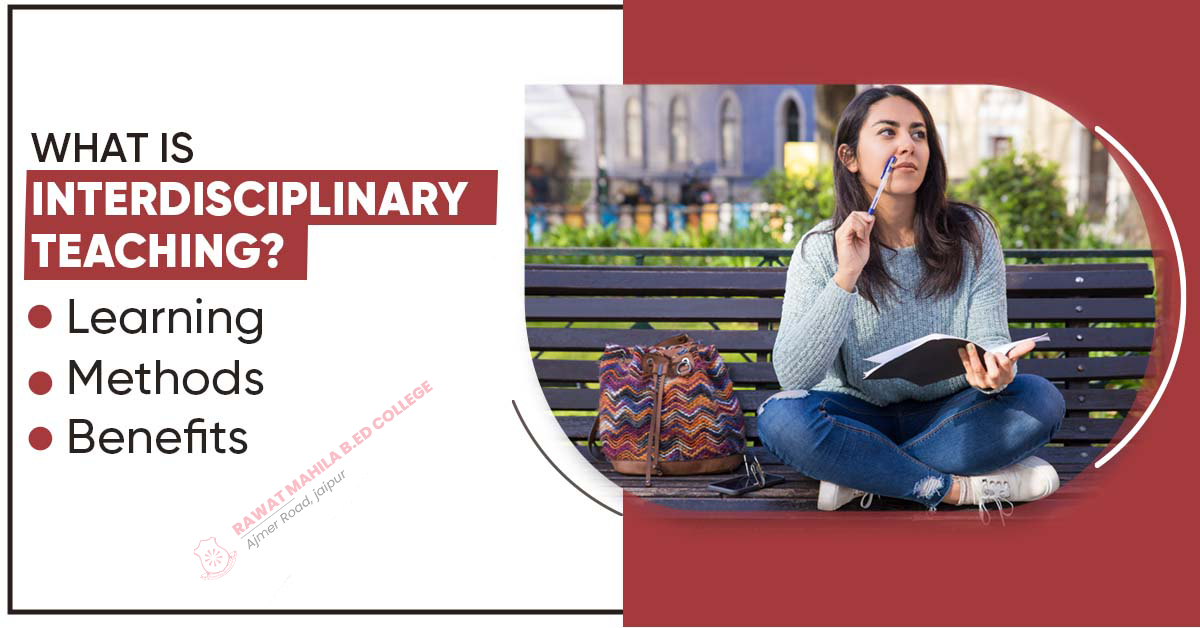What is Interdisciplinary teaching? learning, methods, and benefits

Interdisciplinary teaching and learning involve the integration of knowledge and methods from multiple academic disciplines to create a more comprehensive and holistic understanding of a subject.
This approach recognizes that real-world issues and challenges often require insights and expertise from various fields. By breaking down traditional academic silos, interdisciplinary education aims to foster critical thinking, creativity, and problem-solving skills among students.
In this discussion, we will explore the methods and benefits of interdisciplinary teaching and learning.
Interdisciplinary Teaching and Learning: An Overview
Interdisciplinary teaching and learning involve the integration of knowledge from various disciplines, transcending the boundaries of traditional subjects. It encourages students to draw connections between different areas of study and promotes a more holistic understanding of complex topics.
This approach recognizes that real-world issues often require insights from multiple perspectives to be adequately addressed.
Interdisciplinary Teaching: Methods
1. Curriculum Integration:
- Interconnected Courses: Integrating multiple disciplines into a single course helps students see the connections between subjects. For example, a course on environmental sustainability might include elements of biology, economics, and policy studies.
- Thematic Units: Organizing the curriculum around themes rather than subjects allows students to explore topics in-depth from various perspectives. This approach encourages students to see the interrelated nature of different disciplines.
2. Team Teaching:
- Collaborative Instruction: In team teaching, instructors from different disciplines co-teach a course. This method fosters collaboration, as instructors bring diverse perspectives to the table. Students benefit from exposure to multiple viewpoints, enhancing their understanding of complex topics.
3. Project-Based Learning:
- Real-World Applications: Project-based learning involves students working on extended projects that address real-world problems. These projects often require knowledge from various disciplines, promoting a holistic approach to problem-solving.
- Multidisciplinary Teams: Students can be grouped into multidisciplinary teams, where each member contributes expertise from their respective fields. This mirrors real-world scenarios where professionals collaborate on complex projects.
4. Problem-Based Learning:
- Critical Thinking: Presenting students with interdisciplinary problems encourages critical thinking. They must analyze situations from different angles, drawing on knowledge from various disciplines to propose solutions.
- Case Studies: Integrating case studies that involve multiple disciplines can provide students with practical examples of interdisciplinary problem-solving.
5. Cross-Curricular Assessments:
- Assessment Integration: Assessments that draw on knowledge from different disciplines reinforce the interconnected nature of subjects. This could involve essays, presentations, or projects that require students to synthesize information from various sources.
- Holistic Grading: Evaluating students based on their ability to apply knowledge across disciplines rather than within a single subject encourages a more holistic understanding of the material.
6. Guest Speakers and Experts:
- Diverse Perspectives: Inviting guest speakers from different fields exposes students to diverse perspectives. Experts can provide insights into how their discipline approaches certain issues, enriching students' understanding of the complexity of real-world problems.
Also read: How to Become an Online Teachers
Interdisciplinary Learning: Benefits
- Holistic Understanding: Interdisciplinary learning encourages students to see the interconnectedness of knowledge. Rather than viewing subjects in isolation, they develop a holistic understanding of how different disciplines contribute to a broader understanding of complex issues.
- Critical Thinking Skills: Analyzing problems from multiple perspectives fosters critical thinking skills. Students learn to evaluate information, consider alternative viewpoints, and make informed decisions—a crucial skill set for addressing real-world challenges.
- Creativity and Innovation: Exposure to diverse disciplines sparks creativity. Students are more likely to generate innovative ideas when drawing on a range of knowledge areas. This interdisciplinary approach mirrors the collaborative nature of many creative and innovative endeavors in the professional world.
- Problem-Solving Abilities: Interdisciplinary learning equips students with the ability to tackle complex problems. They develop a comprehensive toolkit for addressing challenges that transcend disciplinary boundaries by integrating insights from different fields.
- Real-World Application: Many real-world problems require interdisciplinary solutions. Students engaged in interdisciplinary learning are better prepared to apply their knowledge to complex, multifaceted issues in their future careers.
- Improved Communication Skills: Collaborating with individuals from diverse disciplines enhances communication skills. Students learn to convey complex ideas to audiences with varying levels of expertise, an essential skill in professional settings.
- Preparation for a Dynamic Work Environment: The modern workforce often demands individuals who can adapt to changing circumstances and possess a breadth of skills. Interdisciplinary learning prepares students for dynamic environments where they may need to draw on knowledge from various fields.
- Global Citizenship: Interdisciplinary education can contribute to the development of global citizens. By examining global issues from multiple perspectives, students gain a more nuanced understanding of cultural, economic, and environmental factors influencing global challenges.
- Lifelong Learning Habits: Interdisciplinary learning fosters a mindset of curiosity and continuous learning. Students exposed to the integration of disciplines are more likely to embrace a lifelong learning approach, seeking out knowledge from various sources throughout their lives.
Challenges and Considerations:
1. Logistical Challenges:
- Coordinating schedules and curriculum alignment between different departments can be challenging.
- Institutional structures and policies may need to adapt to support interdisciplinary initiatives.
2. Faculty Collaboration:
- Faculty members may face challenges in coordinating and aligning their teaching methods and content.
- Encouraging and supporting faculty collaboration is essential for successful interdisciplinary programs.
3. Assessment Difficulties:
- Traditional assessment methods may need to adequately capture the interdisciplinary skills students acquire.
- Developing effective assessment strategies that align with interdisciplinary learning objectives is crucial.
4. Resistance to Change:
- Both faculty and students may be resistant to departing from traditional disciplinary boundaries.
- Addressing resistance requires effective communication about the benefits and goals of interdisciplinary education.
5. Resource Allocation:
- Interdisciplinary programs may require additional resources, both in terms of faculty development and infrastructure.
- Institutions need to allocate resources strategically to support the success of interdisciplinary initiatives.
Conclusion:
Interdisciplinary teaching and learning offer a transformative approach to education, preparing students for the complexities of the real world. By breaking down the barriers between academic disciplines, this approach fosters a holistic understanding of knowledge, enhances critical thinking and problem-solving skills, and prepares students for success in diverse and dynamic professional environments.
While challenges exist, the benefits of interdisciplinary education make it a valuable investment in the development of well-rounded, adaptable, and innovative individuals.
As education continues to evolve, the integration of interdisciplinary approaches will likely play an increasingly important role in shaping the future of learning and preparing students for the challenges and opportunities of a rapidly changing world.



